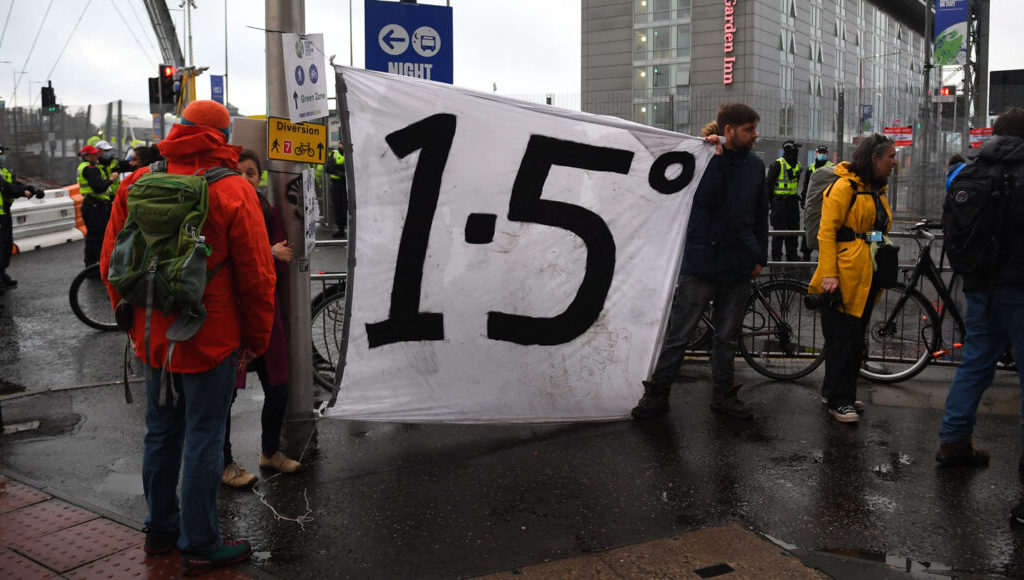
As we approach the third decade of the 21st century, climate change is no longer a distant prediction—it’s an unfolding reality. Over the past century, human activities, notably the burning of fossil fuels like coal, oil, and natural gas, have significantly ramped up concentrations of greenhouse gases in the atmosphere. The result? The Earth’s average surface temperature has risen. According to the National Aeronautics and Space Administration (NASA) and the National Oceanic and Atmospheric Administration (NOAA), the past years have been the warmest on record, with 2020 tying with 2016 as the warmest year ever recorded. Adding to the devastation, July of 2023 has been recorded as the “Hottest Month” ever.
This temperature elevation is not just a trivial statistic but a harbinger of amplified and frequent heatwaves, erratic weather patterns, receding polar ice caps, and rising sea levels. Data from the World Meteorological Organization (WMO) illustrates that the global sea level has risen by around 3.6 millimetres per year from 2005 to 2015, almost double the average rate of the 20th century. Such rapid shifts directly threaten coastal cities, islands, and the very existence of some nations.
In the midst of these stark transformations, specific numerical benchmarks have emerged in international climate discussions, serving as rallying cries for action and markers of global commitment. The most prominent among them is the 1.5°C target, but why this specific figure? The origins can be traced back to the landmark Paris Agreement of 2015, where global leaders acknowledged the catastrophic implications of allowing global temperatures to rise more than two °C above pre-industrial levels.
However, as more research emerged, it became evident that even a two °C rise could have devastating impacts, especially for vulnerable regions. Thus, the ambition was adjusted: limiting the temperature increase to 1.5°C above pre-industrial levels was set as the new goal.
But the discourse around these benchmarks is not just about numbers; it’s about the tangible, lived experiences of billions. Every fraction of a degree rise brings exacerbated challenges: more intense droughts, fiercer storms, and significant biodiversity loss.
Perspective: From 2°C to 1.5°C
As we trace the evolution of global climate targets, it’s evident that these benchmarks are not just about scientific calculations but are deeply rooted in the global community’s collective effort to protect our planet.
The two °C threshold historically occupied the centre stage of global climate aspirations. The significance of this number can be traced back to the 1970s when Yale economist William Nordhaus suggested that a two °C increase in global temperatures would push the Earth beyond familiar limits. Over the years, this benchmark gained traction and echoed in various scientific circles and international discourses. By the early 1990s, the European Council officially endorsed the two °C target, asserting that global temperatures should not exceed this limit above pre-industrial levels to prevent the most detrimental effects of climate change.
Research from the Intergovernmental Panel on Climate Change (IPCC) warned that surpassing the two °C threshold would critically endanger global food supplies, precipitate more extreme weather events, and lead to the large-scale extinction of plant and animal species. Economic assessments painted a similarly dire picture. According to a study by the Grantham Research Institute, a temperature increase beyond two °C could cause a global GDP loss of up to 2% annually.
However, as the world moved closer to this precarious brink, it became increasingly clear that the two °C target, although ambitious, might not be enough to safeguard the most vulnerable regions, tiny island nations and territories prone to desertification. The above understanding set the stage for the historic 2015 Paris Agreement.
During the Paris deliberations, the Alliance of Small Island States, a coalition representing some of the world’s most vulnerable island nations, championed the inclusion of a more stringent 1.5°C target. Their plea was clear: even a two °C rise could submerge their homelands. Supporting this perspective, the IPCC’s Special Report on Global Warming of 1.5°C in 2018 presented alarming statistics. The difference of just 0.5°C could expose an additional 10 million people to the risks of sea-level rise, double the decline in global fish catch, and significantly intensify heatwaves in urban areas.
Consequently, in an unprecedented move, the Paris Agreement called for efforts to “limit the temperature increase to 1.5°C above pre-industrial levels, recognizing that this would significantly reduce the risks and impacts of climate change.”
The shift from 2°C to 1.5°C, although seemingly minute numerically, signifies a momentous global acknowledgement of the intricate nuances of climate change and the profound ramifications of every fractional temperature increase.

Understanding the 1.5°C Target
The 1.5°C target has, in recent times, become a linchpin in climate discussions, often bandied about in international conferences and environmental publications. However, this number’s complexity and profound implications deserve a deeper exploration.
At its core, the 1.5°C represents an increase in the global average temperature compared to pre-industrial levels. The term ‘pre-industrial’ typically refers to the period before the significant increase in greenhouse gas emissions brought about by the Industrial Revolution. More specifically, it points to a baseline roughly estimated between the mid-19th century and early 20th century.
So, why is this historical point of reference crucial?
Data from ice cores and tree rings, among other proxies, have revealed that global temperatures remained relatively stable for several thousand years before this period. The onset of industrialization marked an inflexion point. According to the World Meteorological Organization, the last four decades have been consecutively warmer than any decade since 1850. By 2019, the global temperature had risen by approximately 1.1°C above pre-industrial levels.
While the 1.5°C target pertains to global averages, it’s vital to note that the actual rise isn’t evenly distributed. Different regions can and do experience varying temperature changes. For instance, the Arctic region is warming more than twice as fast as the global average. A study in Nature Climate Change journal pointed out that many land areas, including parts of Europe, North America, and Asia, are set to experience warming well beyond the 1.5°C global target.
Such discrepancies arise from many factors, including ocean currents, melting polar ice, and land-use changes. The vastness of oceans, which cover about 71% of Earth’s surface, act as giant thermal buffers, absorbing and storing vast amounts of heat and warming at a slower rate than landmasses.
However, a global average remains crucial for many reasons:
a. Simplified Communication: A global average provides a unified benchmark, making it easier for policymakers, scientists, and the general public to understand the magnitude of the challenge.
b. Universal Impact: While regional variations exist, a global temperature rise affects widespread phenomena, such as sea level rise. The National Oceanic and Atmospheric Administration (NOAA) estimates that if we hit the two °C mark, sea levels could rise by about 0.3 to 0.8 meters by 2100, affecting millions globally.
c. Ecological and Agricultural Consistency: Many natural systems, like coral reefs, rainforests, and agricultural zones, span vast areas and multiple countries. A global metric offers a consistent measure to evaluate risks and plan protective measures.
Therefore, the 1.5°C target is not just a number. It reflects humanity’s collective endeavour to anchor our future to a point of historic stability, protect the Earth’s myriad ecosystems, and preserve the planet for future generations. As we stand on the brink of this threshold, understanding its depth and breadth becomes not just a scientific necessity but a moral imperative.


